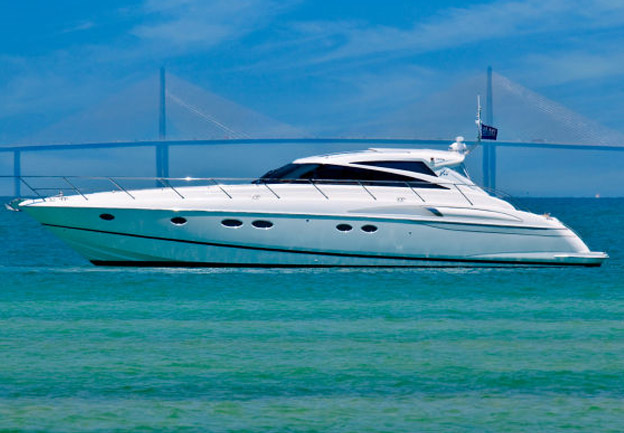- Alaskan Yachts
- Azimut Yachts
- Back Cove Yachts
- Beneteau Yachts
- Benetti Superyachts
- Bertram Yachts
- Boston Whaler
- Broward Yachts
- Buddy Davis Sportfish
- Burger Yachts
- Cabo Yachts
- Catamarans
- Carver Motoryachts
- Center Console
- Chris-Craft Yachts
- Cruisers Yachts
- DeFever Trawlers
- Dufour Sailboats
- Fairline Yachts
- Feadship Yachts
- Ferretti Yachts
- Formula Yachts
- Fountaine Pajot Cats
- Grady-White
- Grand Banks Trawlers
- Hargrave Yachts
- Hatteras Yachts
- Hinckley Picnic Boats
- Horizon Yachts
- Hydra-Sports
- Intrepid Boats
- Jarrett Bay Sportfish
- Jeanneau Yachts
- Kadey-Krogen Trawlers
- Lazzara Yachts
- Luhrs Sportfish
- Marlow Yachts
- Maritimo Yachts
- Marquis Yachts
- McKinna Motoryachts
- Meridian Yachts
- Midnight Express
- MJM Yachts
- Mochi Craft
- Neptunus Motoryachts
- Nordhavn Trawlers
- Nordic Tugs
- Ocean Alexander Yachts
- Offshore Yachts
- Outer Reef
- Oyster Sailing Yachts
- Pacific Mariner Yachts
- Palmer Johnson Yachts
- Pershing Yachts
V58 Viking Sport Cruisers 2004
![]()

Source: Capt. Bill Pike, Power & Motoryacht Magazine
It was one of those days. Beyond the bow of our test boat—a three-stateroom, two-head version of Viking Sport Cruisers’ V58 Express Yacht—the entire seascape was awash with big, hooligan whitecaps. Four- to six-footers pounded the ends of the jetties flanking Florida’s Lake Worth Inlet. Further out, eight- to ten-footers walloped the Gulf Stream, and further still, it was anybody’s guess what Mother Nature was up to.
I dialed in the eerie, computer-generated voice of NOAA on our standard-issue Icom IC-M602 VHF—the wind was northerly at present, the voice said, doing a steady 20 mph, with gusts of 25 mph or more. I shot a glance through the half-open electric sliding roof in the hardtop—it and the Cruisair cockpit air-conditioning system that was presently switched off were the only options on the boat. The cirrus-streaked, cerulean sky was mute but glorious testimony to the fact that yet another front was departing the area.
“Nice day for a spin,” I grinned at the guy sitting next to me, Tom Carroll Jr., sales manager for Viking’s Sport Cruisers division. He grinned back, guessing immediately that I wasn’t being absolutely facetious. Indeed, based on fond remembrances of the fun I’d had test-driving a 65-foot sistership to the V58 some years prior, I was counting on a smooth, limo-like ride once we were in open water, no matter what the weather was doing. Carroll seemed just as upbeat.
I inched the Rexroth Mecman engine controls a little farther ahead, pouring on the coal with both expectation and enthusiasm, intent on carving a fast, feisty turn just short of the sea buoy. “Now this is boat testing,” I chortled, basking in the steady thrum of powerplants worthy of the name—a matched set of 1,050-hp MAN diesel inboards, whirling beefy Temet shafts, and big, five-bladed, S-class CJR props. For added grins, I popped a switch on the dash a couple of times, just to see how effective and fast the Bennett tabs were. “Groovy,” I noted in short order, just before leveling back out and spinning the wheel hard over to starboard.
The V58 banked like a sea-stomping offshore racer. Both hydraulics and engine-driven power-assist had to be at the bottom of the fingertip steering control I was currently experiencing, I suggested to Carroll. He nodded as I straightened the boat out and, with just a tad more throttle, began beelining south at 30-some miles per hour, with waves and weather over the stern.
We’re talkin’ a driver’s boat here, folks! Visibility from the comfy, bolster-type helm seat I was squeezed into was superb, to some extent due to the whopping size of the panels in the V58’s FRP windshield, but to an even larger extent to the optimum, four-degree running angle the vessel assumes upon achieving plane and steadily maintains all the way up to her WOT speed of 44.8 mph. Of course, numerous factors contribute to this polished, punch-packing behavior, not the least of them being a slippery, deep-V hull form drawn by famous powerboat designer Bernard Olesinski. There’s no beating an array of nicely blended design elements, like prop pockets for decreased shaft angle and draft; broad, slightly-reversed chine flats for increased lift and transverse stability; and a comparatively narrow, rocket-shape footprint for enhanced speed and turn-carving agility.
Boat Specifications: V58 Viking Sport Cruisers 2004
Boat Type: Cruiser
Standard Power: 2/715-hp Volvo Penta D12-715 diesel inboards
Optional Power: 2/1,015-hp Caterpillar C18 or 2/1,050-hp MAN D2840LE403 diesel inboards
Length Overall (LOA): 58’11”
Beam: 15’5”
Draft: 3’8”
Weight: 44,800 lbs.
Fuel Capacity: 660 gal.
Water Capacity: 125 gal.
Standard Equipment: Trend Marine opening ports; Lewmar windlass w/remote controls; 8-hp Sidepower bow thruster; Ritchie compass; VDO analog engine instrumentation; Furuno Navnet; Simrad AP20 autopilot; Furuno RD-30 depthsounder; Icom IC-M602 VHF; Force 10 cooktop; Sharp microwave oven; Marvel refrigerator; Neff grill, Raritan refrigerator/ice maker and s/s sink in cockpit; duplex Separ SWK 2000/18 UKD fuel-water separators; Tides Marine dripless shaftlogs; Reverso oil-change system; Gianneschi & Ramacciotti engine-room blowers; 90-amp Mass 24/75 battery charger; 13.5-kW Onan genset; 10 Delco Freedom batteries (4 starting, 6 house, and 1 genset); 38,000-Btu Cruisair A/C; 2/50-amp shore-power hookups; 2/Charles Marine Iso-Boost isolation transformers; Sea-Fire FM 200 auto. fire-extinguishing system
Test Engines: 2/1,050-hp MAN D2840LE403 diesel inboards
Transmissions / Ratio: ZF 550A/1.97:1
Props: 30×46 S-class 5-blade CJR
Steering: Teleflex Sea-Star hydraulic w/Hypro Marine power-assist
Controls: Rexroth Mecman electronic
Optional Equipment On Test Boat: hardtop w/electric sliding roof; 16,000-Btu Cruisair cockpit A/C
Conditions: temperature: 80º; humidity: 47%; wind: 20-25 mph; seas: 6’-8’; load: 160 gal. fuel, 125 gal. water, 2 persons, 200 lbs. gear. Speeds are two-way averages measured w/Stalker radar gun. GPH measured with MAN fuel-monitoring equipment. Range: 90% of advertised fuel capacity. Decibels measured on A scale. 65 dB is the level of normal conversation. All measurements taken with trim tabs fully retracted.